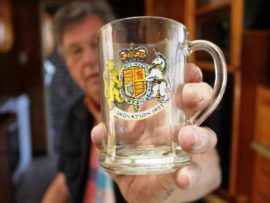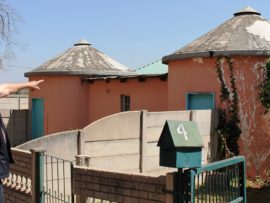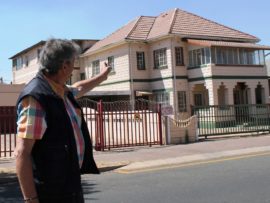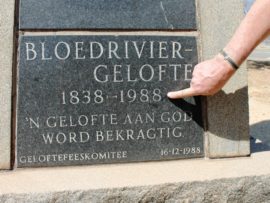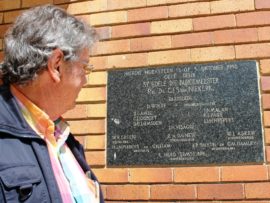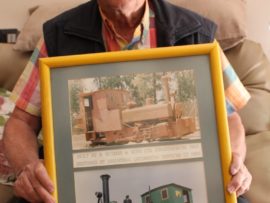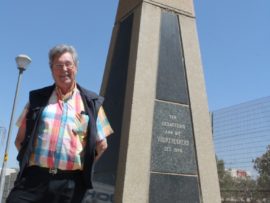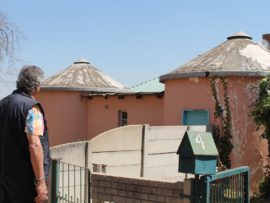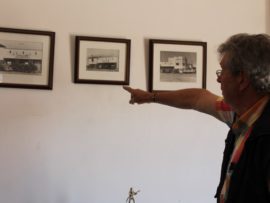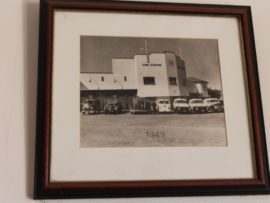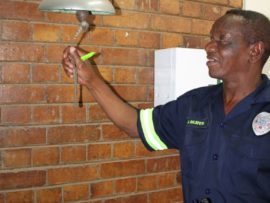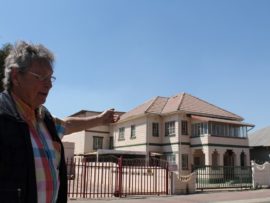The history of Nigel relived through its iconic buildings
Throwback Thursday: First there was gold, and then there was a mining camp followed by the small town which we know today as Nigel.

Throwback Thursday:
The town may be small, but it has many historical, cultural and natural destinations that merit preservation for future generations. However, in order to fully understand and respect its heritage, one has to go back 129 years to where it all started.








In 1882 a farmer Petrus Johannes Marais (nicknamed Oom Lang Piet who owned the farm Varkensfontein in the Heidelberg district) made an agreement with a prospector named Johnstone, allowing him to prospect for gold on the farm Varkensfontein.
Johnstone’ s prospecting operations continued for a considerable time shrouded in secrecy until a stranger turned up at Oom Lang Piet’s home and made an offer to buy the farm. At the time, Marais was reading “The Fortunes of Nigel” by Sir Walter Scott (a story about a young man who was the victim of a dishonest intrigue but eventually achieved his goal in life).
The stranger’s visit immediately aroused Marais’s suspicions to the extent that he decided to visit his farm himself. Once at the farm, he found that his suspicions were well founded.
With the experiences of the character in the novel in mind, he determined not to allow himself to be cheated by cunning fortune seekers and at once set about to establish his own company. In July 1888 (two years after the discovery of gold on the Witwatersrand) Marais achieved his goal.
Marais attributed his luck to the novel he had been reading and therefore, called his company Nigel (after the character in the novel) and in this way, the town of Nigel came into being. In 1888 the state president Paul Kruger declared Nigel as a public digging under notice 331 and since then the history and development of Nigel are inseparable from those of the gold mines.
Development of the town
The town was little more than a mining camp until 1923, when the control of the town was passed into the hands of a Dorpvillage. The first meeting of this council was held on 2 January 1923. The Sub Nigel mine had meanwhile, come into existence and proved to be the richest gold mine in the world. As a result of this fact a great influx of people to the town occurred. Within a space of seven years the local authority was given increased status and in 1930 was elevated to a Town Council.
On 24 November 1930 the first meeting of the Town Council was held and Mr CL Mackle was elected the first mayor. This event also marked the starting point of fast growth of Nigel with the town’s first municipal building to be built some two to three years later.
The years 1934 to 1939 saw the most noteworthy development of the town. This includes the municipal building in Hendrik Verwoerd Street, Barclays Bank, Standard Bank, the Fire Brigade and Police Station. This was only slowed down by the outbreak of World War II. During those five years, no less than five suburbs were proclaimed and speculation in fixed property soared. The railway line between Springs, Nigel and Heidelberg was opened on 18 October 1935.

Until then, the nearest railway station had been Kaydale; situated five miles from Nigel on the main line between Johannesburg and Durban, and all transport had been conducted by ox wagon, horses or cars.
The old steam locomotive
A monumental reminder of what once was part of Nigel’s mining industry, is the refurbished steam locomotive, which was casted onto concrete next to the former Goldfields Hotel (Picanha) in 1992. Former town councillor Willie Ras initiated the idea and said it was strategically placed so it can be seen from all directions when entering the town.

The old locomotive, Sub Nigel Limited, was built in 1924 by Hudson and Sons and used to transport crushed material between the mines. The train was donated to Nigel Town Council during the 1970s by Sub Nigel Gold Mine after its closure. According to Willie, the town council had no money to restore the old locomotive to its former glory, but they approached a prominent businessman Mike Thoma, who agreed to restore the train at own cost. He spent roughly R35 000, arranging for experts from the United Kingdom to visit Nigel and assist with the exact colouring, instruments and material. Willie is adamant that the old locomotive remains the property of the Nigel community, and that it should never be moved elsewhere.
Nigel is one of Gauteng’s industrial growing points: a country atmosphere of a semi-sized town with a pleasant residential area. Nigel got its fame for being a town with a country atmosphere and characteristics. Its infrastructure expanded exponentially over time with some of the town’s most historic buildings erected during the early 1930s.
Nigel town hall
The corner stone was laid by reverend CJS van Niekerk on 5 October 1956, but not after some protest from local residents who was opposed to having a town hall. The building was later upgraded with the addition of a second storey to accommodate a gallery, private chambers for the mayor and his wife and a boardroom.


Centenary celebrations
In 1988 when Nigel celebrated its 100th centenary, a unanimous decision was made by councillors not to spend a large sum of money by hosting a big event, but rather to use the money to establish a retirement village in town. It was finally built and during its inauguration it was appropriately named Eeufeespark Retirement Village.
Interesting facts about Nigel
* Nigel boasts several natural springs;
* Laerskool Hannes Visagie was named after a former pharmacist and MP (member of parliament);
* Hoërskool John Vorster was named after a former LP and minister and Laerskool Tini Vorster was named after his wife;
* The former Goldfields Hotel was owned by a millionaire. He was a local businessman (MJ Plen) and donated a portion of land to the town council with one specific request – the said portion of land was never to be sold, nor was there to be built on the land. The town council honoured this request and nowadays this portion of land is known as the luscious green park opposite Picanha.
* Nigel’s first hotel in Hendrik Verwoerd Street (which is now a block of flats), used to accommodate hundreds of prospectors and gold miners, many who travelled by horse. It was also the only local gathering site for residents.
* The canal that runs through town, originates from an overflow from the Blesbokspruit into Nigel Dam;
* Jaap Marais, a well-known political party leader during the 1930s, owned a property in Kerk Street, which was later known as Saambly-Harmonie Losieshuis;
* During 1953 a coronation was laid to welcome the visit of Queen Mary to the country. Learners from the local primary school each received a coronation coffee mug as souvenir;
* Nigel Police Station was built during 1935 and consisted of two small bungalows that were joined with a narrow passage. This building is still standing and is situated next to Nigel Fire Brigade.
Nigel proved in a short time to be one of the most stable and upcoming towns in Gauteng, except during the economic depression, which made times tough. Nigel did survive, and even when the goldmines closed, the growth in the industrial area raised and even excelled.
The request for existing industrial ground came in great demand, to the point that accommodation became unobtainable. Nigel however, foresaw the future and has enough residential, commercial and industrial stands available for any requirement or necessity.
The services offered by the infrastructure of Nigel are indeed a great advantage. The 88KV network offers the industrialist industrial stands and/or industrial units, with or without siding facilities, the most recent of which is the Gibela Train Manufacturing site outside Dunnottar.
Add the labour force that Nigel manages and you will realise that Nigel stands within a dynamic development potential.
Consumer needs are catered by a diversity of commercial establishments including the Ferryvale Shopping Centre and The Angelo Mall.
Nigel does not only supply regular services to the public, but also sees to the community’s needs, such as sporting and recreation facilities and a modern library. Sporting facilities includes: 18-hole golf course, rugby stadium, football fields, bowling greens, tennis and squash courts and many more.
The international known Marievale Bird Sanctuary is mostly inside the municipal area of Nigel.
The town has a popular dam recreation resort available that is mostly used by anglers and water sports enthusiasts. The Piet Wagener Game Park features springbok, zebra, duiker and ostrich among other fauna.
Several Primary and High Schools in town provide education to students of Nigel and out of Nigel. One High School offers a hostel.
Nigel also provides for the needs of senior citizens with Nigel Old Age Home in Hendrik Verwoerd Street and Eeufeespark Retirement Village. The religious aspect of Nigel is well complemented by churches of various denominations.
Nigel’s municipal government became part of the much larger Ekurhuleni Metropolitan Municipality following the creation of new local government structures in 2000, along with most of the rest of the East Rand.
| Follow us on: | ||
 |
 |
|

